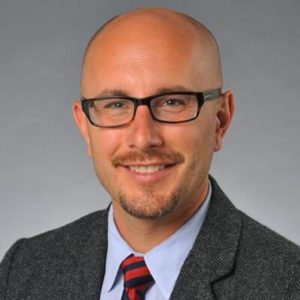Can Partisanship Be Fixed?
Investigate the debate over parties by examining their nature and role in American political life.
July 21 – August 3, 2019
Washington, DC
The story of American politics in the twentieth century cannot be told without reference to the conservative movement. This collection of journalists, policy experts, activists, and politicians, and the journals and institutions around which they congregated, had a decisive impact on the Republican Party and on the country that is still being felt today. Indeed, so successful was modern American conservatism in reorienting the intellectual and political direction of the country that its opponents have sought to emulate its tactics if not its goals.
Whence did this movement arise? How did the ideas and arguments put forth in obscure magazines come to shape the worldview and policy of American presidents and congressional leaders? Who were the principal intellectual figures of the conservative movement, and how did they seek to influence American elites? Through a close reading of essays, opinion pieces, and political speeches, students will trace how the principles of conservative leaders have been translated into concrete reality. Students will recall the biographies and histories of important conservative figures and publications such as William F. Buckley Jr.’s National Review, Irving Kristol’s Public Interest, Norman Podhoretz’s Commentary, and Robert Bartley’s Wall Street Journal. And they will reflect on what the story of that movement might teach us about the status and prospects of conservative thought and practice today.
This course will consist of two sessions per day over a two-week period. The first week will cover the early years of the conservative movement, with sessions on libertarianism, traditionalism, anti-Communism, and the founding of National Review. The second week will cover the 1960s to the present day, with sessions on neoconservatism, populism, the religious right, and the current conservative moment.
Images courtesy Ronald Reagan Presidential Library | NARA
Matthew Continetti on conservative intellectuals
This two-week course will take place in Washington, DC. It is a full-time commitment for Monday–Friday, with required sessions in the morning, afternoon, and some evenings.

Matthew Continetti is the director of domestic policy studies and the inaugural Patrick and Charlene Neal Chair in American Prosperity at the American Enterprise Institute (AEI), where his work is focused on American political thought and history, with a particular focus on the development of the Republican Party and the American conservative movement in the 20th century.

Matthew Continetti is the director of domestic policy studies and the inaugural Patrick and Charlene Neal Chair in American Prosperity at the American Enterprise Institute (AEI), where his work is focused on American political thought and history, with a particular focus on the development of the Republican Party and the American conservative movement in the 20th century.
A prominent journalist, analyst, author, and intellectual historian of the right, Mr. Continetti was the founding editor and the editor in chief of The Washington Free Beacon. Previously, he was opinion editor at The Weekly Standard.
Mr. Continetti is the author of three books, including, most recently, The Right: The Hundred-Year War for American Conservatism (Basic Books, 2022).
He has a B.A. in history from Columbia University.
Recommended Reading:
To learn more about the figures covered in this course, we encourage you to visit ContemporaryThinkers.org, a website devoted to the ideas and influence of pioneering intellectuals of the twentieth and twenty-first centuries. Sponsored by the Hertog Foundation, ContemporaryThinkers.org includes sites devoted to Irving Kristol, Edward C. Banfield, Nathan Glazer, James Q. Wilson, and many others.
Readings:
Video:
Magazines:
Discussion Questions:
Readings:
Video:
Magazines:
Discussion Questions:
Readings:
Videos:
Discussion Questions:
Readings:
Videos:
Discussion Questions:
Readings:
Videos:
Magazine:
Discussion Questions:
Readings:
Magazines:
Discussion Questions:
Readings:
Discussion Questions:
Readings:
Videos:
Magazine:
Discussion Questions:
Readings:
Video:
Magazine:
Discussion Questions:
Readings:
Video:
Magazines:
Discussion Questions:
Readings:
Magazines:
Discussion Questions:

Daniel DiSalvo
Daniel DiSalvo is a Senior Fellow at the Manhattan Institute’s Center for State and Local Leadership and an Assistant Professor of Political Science at The City College of New York-CUNY. His scholarship focuses on American political parties, elections, labor unions, state government, and public policy.

Matthew Continetti
Matthew Continetti is the director of domestic policy studies and the inaugural Patrick and Charlene Neal Chair in American Prosperity at the American Enterprise Institute (AEI), where his work is focused on American political thought and history, with a particular focus on the development of the Republican Party and the American conservative movement in the 20th century.